An activity to help you discover the diversity of moths in your backyard!
You will find ways to attract moths to your backyard. Enjoy viewing moths to discover their beauty and diversity. National Moth Week is celebrated July 18th to the 26th 2020 and if you choose to participate as a citizen science you will add to vital research. Created By Nancy Yard, RHA Volunteer and Educator
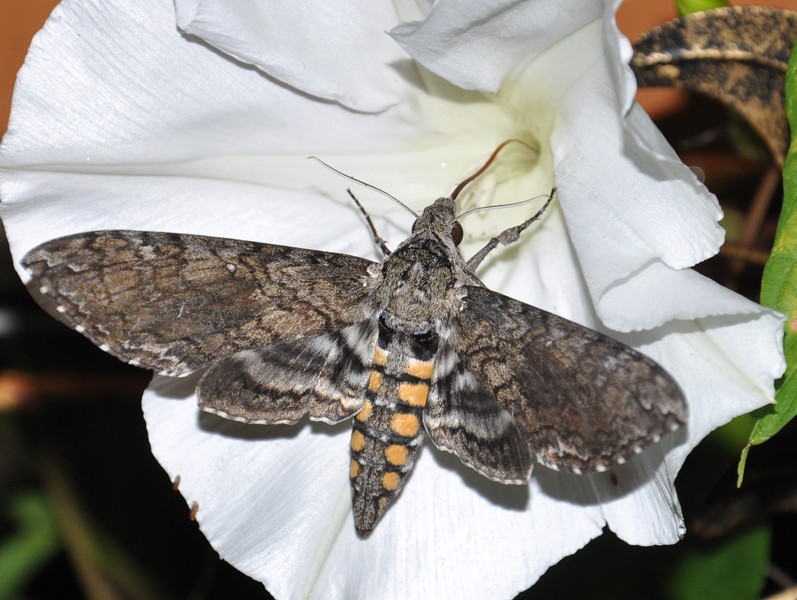
Level: Families exploring nature together
Duration: This lesson can be done in an evening as part of a backyard exploration or on going throughout the summer months depending on interest level.
Setting: This lesson is designed to take place in your own backyard.
Materials:
- Raising moon flowers: Moonflower seed, garden soil, large pot or in ground bed. trellis or string to support growing plants
- Attracting Moths: White sheet, white pillow case, or other white surface, reading lamp, porch light, or other bright light
- Moth Record: nature journal, camera, or sketchbook, field guide
Background Information: You will raise moon flowers to attract moths to your yard, garden, deck, or patio. You will utilize a light source to attract moths and a white surface for ease in viewing and identifying moths.
Attracting and studying moths will introduce you to a very diverse group of insects. They are easy to attract and view up close. And….. you get to be outside at night. Here are a few to facts to get you started:
Moths use light to orient in their environment and are attracted to our homes as they respond to our evening lighting. Moths often come to rest under lights as they do in daylight and can be observed at rest in the morning. Moths are easily attracted on a warm, humid evening with a household light. A variety of lights can be used to attract a greater variety of moths.
Note: some scientists believe that light pollution reduces a moth’s attraction to light and may impact how they navigate in their natural environment.
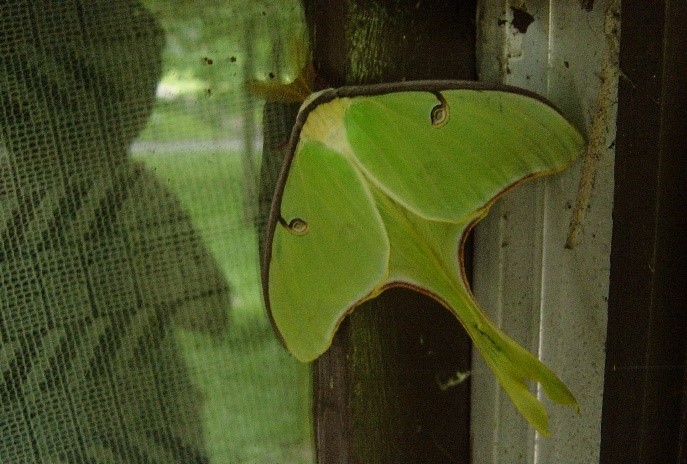 Luna moth resting on screen in the morning
Luna moth resting on screen in the morning
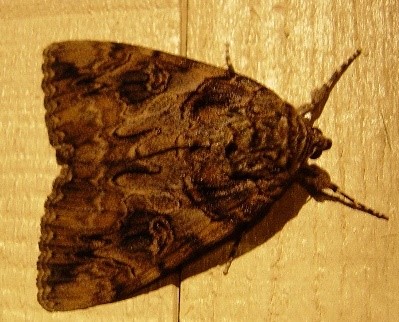 Moth at rest on home
Moth at rest on home
- Moths go through four stages of development: egg, larva/caterpillar, pupa and adult.
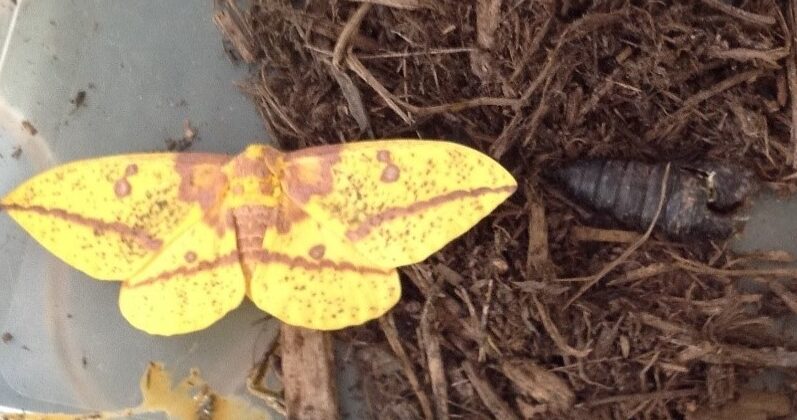 Newly emerged Imperial Moth with Pupa
Newly emerged Imperial Moth with Pupa
- Many moths over winter as a larva, pupa, or an adult. They are often found in leaf litter, attached to tree limbs or under bark.
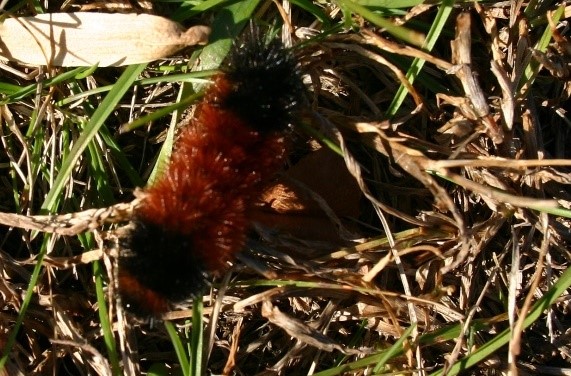 Wooly Bear caterpillar seeks a safe place to overwinter (Isabella Tiger Moth)
Wooly Bear caterpillar seeks a safe place to overwinter (Isabella Tiger Moth)
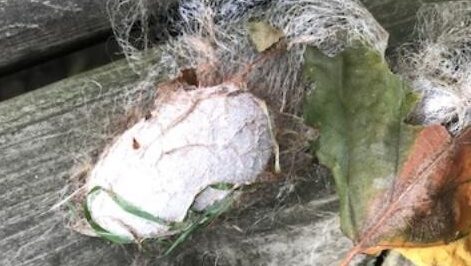 Polyphemus moth pupa found in leaf litter
Polyphemus moth pupa found in leaf litter
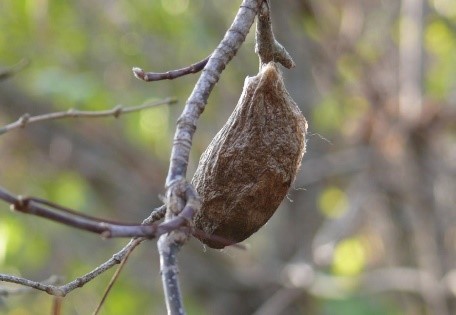 Cercropia moth pupa attached to twig
Cercropia moth pupa attached to twig
- Moths in all stages are best observed, sketched, and/or photographed without touching. Many moth caterpillars have sharp hairs and can contain irritating toxins. They should not be handled.
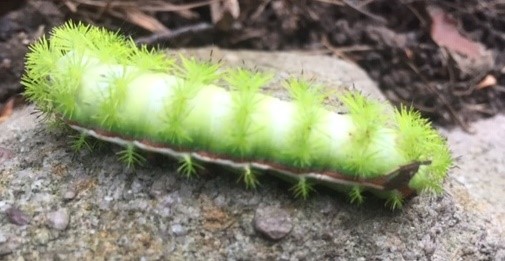
IO Moth caterpillar
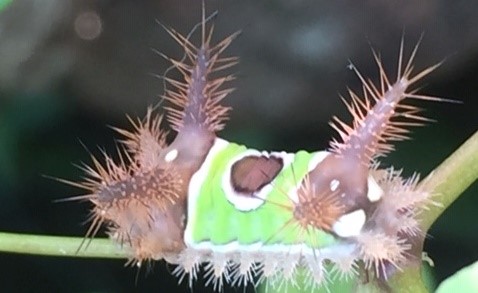
Saddleback caterpillar
- Not all moths come out at night. The Eightspotted Forester moth flies in the day and is often thought to be a butterfly. Many moths are important flower pollinators. Sphinx moth or hawk moths often visit flower gardens. Moths do not require brightly colored flowers but are often attracted by scent.
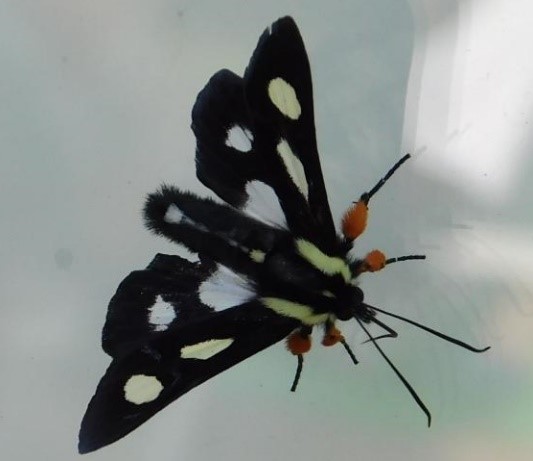
Eightspotted Forester Moth Photo Missouri Department of Conservation
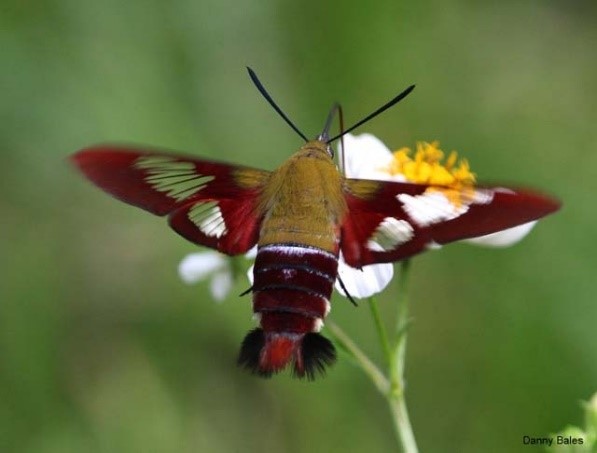
Clearwing moth often called hummingbird moth Photo: Butterflies and moths of N.A.
The Activity:
- Moonflowers are climbing, fragrant flowers. The tubular white flowers bloom late in the day and may attract pollinator moths.
- Purchase Moonflower Seeds from a local seed source. The seeds can easily be collected in the fall for the following year.
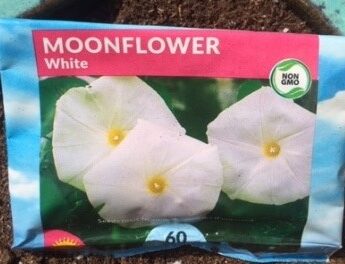
- Select a container or plant in the ground
- -The large seed is easy to handle. Soaking in water for six to eight hours prior to planting will decrease germination time (the time needed to sprout).
- -Plant in the ground or in a pot approximately two to three seeds per group. Poke a small hole using a stick so seed is placed ¼ inch below the soil.
- -Cover the seed and water to keep moist.
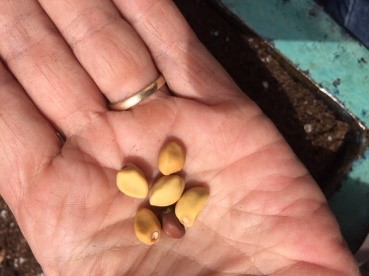
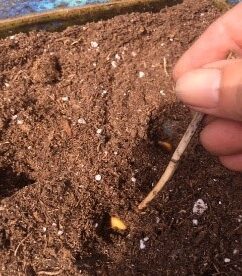
- Select a support for your vine. Plants will grow easily up a string or trellis. Vines grow 4- 12 feet in height depending on your support. They climb easily with just a little encouragement.

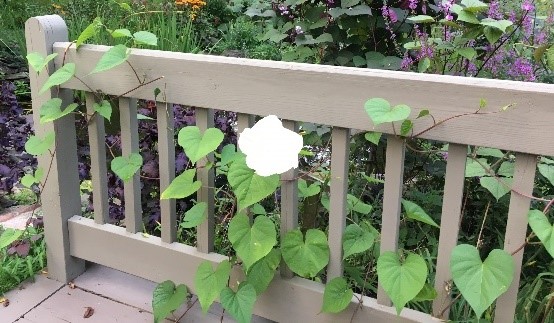
(images: Pam’s Art Studio)
Attracting Moths:
- Look around your home for a light source.
- Hang a white sheet, pillow case or other piece of material to view moths attracted by the light source
- Experiment with leaving the light source on for different lengths of time to conserve energy. Check your sheet prior to bedtime. Many moths will still be present the next morning so make certain to check again when you get up. Hint: The light source does not need to be left on all night. Scientists experiment with different types of light including ultraviolet and black lights.
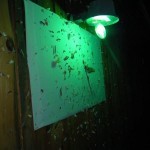 Photo: David Small National Moth Week
Photo: David Small National Moth Week
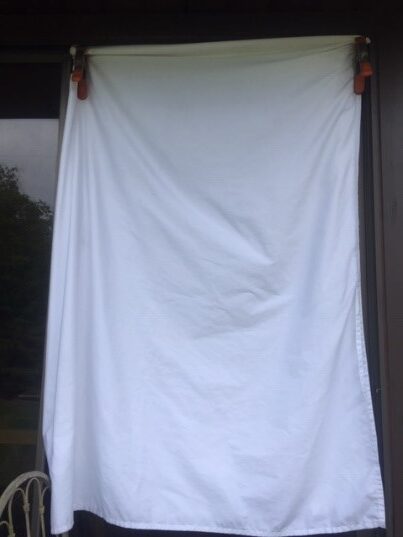
Want to do more?
Many moths are attracted with scent. Try creating a moth lure. Experiment with a mixture of brown sugar, molasses, and fruit/fruit juice. The mixture should be thick enough to spread with a paint brush. Spread on a tree or board.
Resources:
Books:
- Peterson First Guides to Butterflies and Moths
- Peterson First Guides to Caterpillars
- You’re Invited to a Moth Ball by Loree Griffin Burns Photographs by Ellen Harasimowicz
- Discovering Moths: Nighttime Jewels in Your Own Backyard by John Himmelman
Website:
- https://www.sciencefriday.com/educational-resources/observe-moths/
- http://www.mothscount.org/
- http://nationalmothweek.org/
- https://www.discoverlife.org/moth/
Wrap Up:
How did you like this activity? Please share any questions, comments, or photos that you and your child have on the Raritan Headwaters Learning Community Facebook Page!
More Raritan Headwaters Learning Resources



